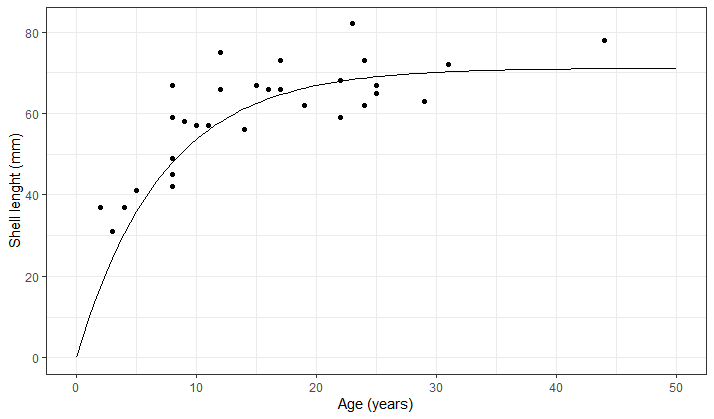In Sweden there are 7 freshwater mussel species, where 4 of these species are endangered. Due to the already low number of mussels species in Sweden, it is important that we focus on having healthy populations of all species, which provides with higher productivity of unique ecosystem services. The thick-shelled river mussel (Unio crassus) is one of Sweden’s most endangered mussel species. The primary belief for its endangered status is skewed age distribution, with most populations consisting of older individuals. This skewed age distribution could be due to high vulnerability of juveniles but could also be due to low detection of juveniles.
Estimation of life history traits can lead to better understanding of why a mussel populations and species are diminishing. Life history estimates can also lead to better conservation due to knowing where help is needed in a mussels life stage. This can be done by either tracking individuals to measure survival and reproduction, or study the age, stage, or size distribution of a population.
Skewed age distribution for mussels is primarily skewed size distributions, most populations consisting of larger individuals. Size can be used as a proxy for age. Larger individuals are usually older but abiotic factors and compounds could have an effect on growth, leading to individuals in one watercourse being larger than in another.

Aims
My aim was to estimate life history parameters for U crassus:
- I used yearly growth increments from shells to test if variation in growth can be explained by abiotic factors.
- I estimated fecundity and survivability for juvenile Swedish U. crassus using size distribution data from large scale monitoring of nineteen known sites in SE Sweden.
- Size distribution data was used also to estimate the effect of various abiotic factors on the detection probability of juvenile and adult mussels and to investigate if juvenile mussels are often not detected.